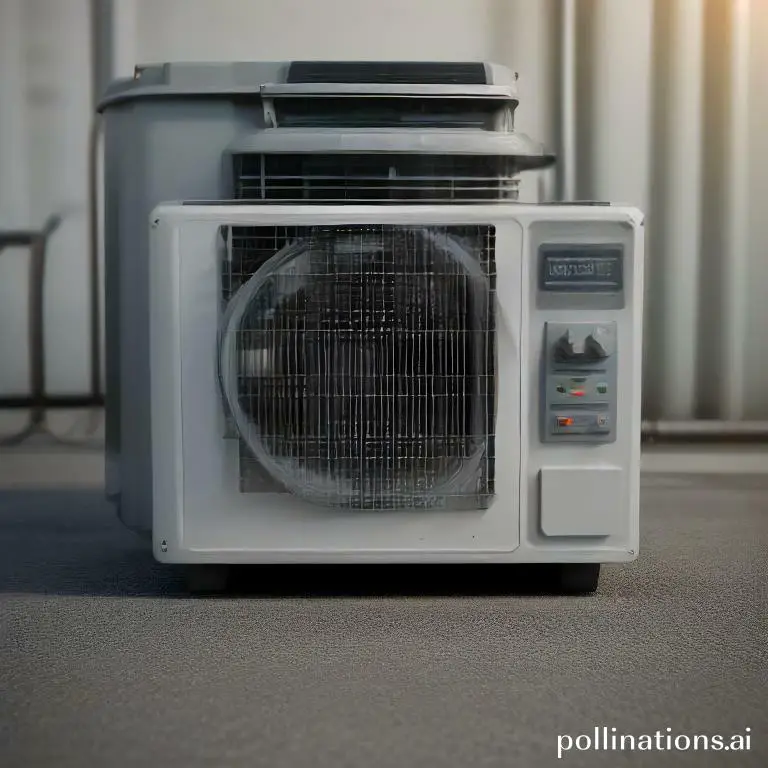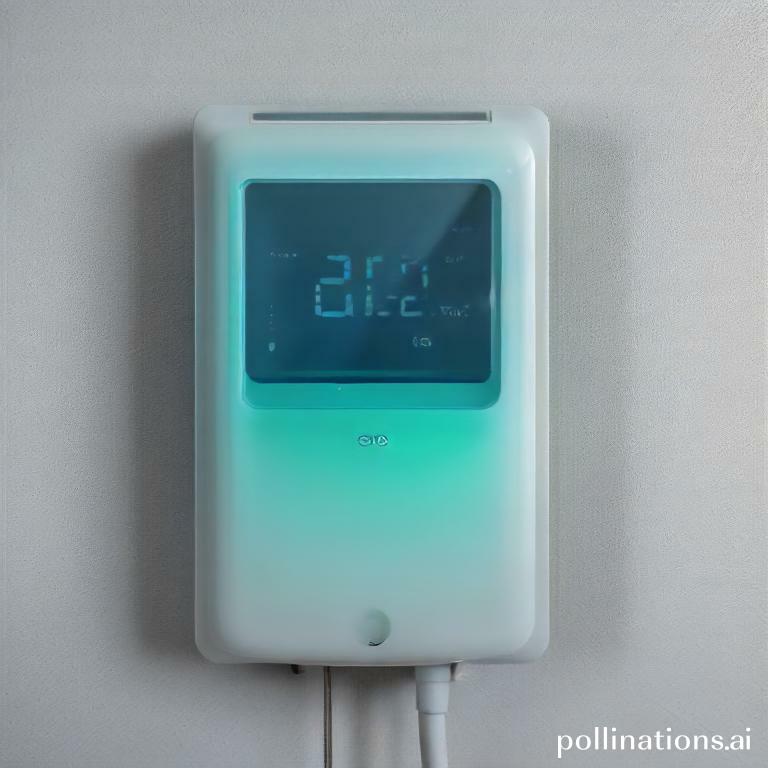
Check Out The Exclusive Deals Waiting For You! ∇
| # | Preview | Product | |
|---|---|---|---|
| 1 |

|
The Complete HVAC Bible for Beginners: The... | Buy On Amazon |
| 2 |

|
Building Automation Systems A to Z: How to Survive... | Buy On Amazon |
The Role of IoT in Energy Efficiency
1. Monitoring and Controlling Energy Consumption
With the advent of the Internet of Things (IoT), energy efficiency has reached a new level of sophistication. IoT technology allows for real-time monitoring and control of energy consumption in various settings, including residential, commercial, and industrial. By installing smart meters and sensors, energy usage can be tracked and analyzed, providing valuable insights into patterns and trends. This data can then be used to optimize energy consumption and reduce waste.
For example, in a smart home equipped with IoT devices, homeowners can remotely monitor and control their energy usage through mobile applications. They can receive real-time updates on energy consumption, set energy-saving schedules, and even receive alerts in case of abnormal energy usage. By having this level of control and visibility, individuals can make informed decisions and take actions to reduce their energy footprint.
2. Implementing Demand Response Strategies
IoT technology also enables the implementation of demand response strategies, which play a crucial role in energy efficiency. Demand response involves adjusting energy consumption in response to supply conditions, such as peak demand periods or grid instability. By leveraging IoT-connected devices, energy providers can communicate with consumers and request temporary reductions in energy usage during critical times.
For instance, in a smart grid scenario, when the demand for electricity surpasses the available supply, IoT-enabled devices can automatically adjust their energy consumption. This could include temporarily reducing the operation of non-essential appliances or shifting energy usage to off-peak hours. By implementing demand response strategies, energy providers can ensure a stable and efficient energy grid, at the same time consumers can contribute to overall energy conservation.
3. Integrating Renewable Energy Sources with HVAC Systems
IoT technology also facilitates the integration of renewable energy sources, such as solar or wind, with heating, ventilation, and air conditioning (HVAC) systems. By connecting renewable energy generators to IoT platforms, energy production can be optimized based on real-time data and demand patterns.
For example, an IoT-enabled HVAC system can automatically adjust its energy source based on the availability of renewable energy. During periods of abundant solar power, the system can switch to solar energy, reducing reliance on traditional energy sources. This integration not only promotes the use of clean energy but also maximizes its efficiency by aligning energy production with demand.
| Outline II |
|---|
| I. The Role of IoT in Energy Efficiency |
| 1. Monitoring and Controlling Energy Consumption |
| 2. Implementing Demand Response Strategies |
| 3. Integrating Renewable Energy Sources with HVAC Systems |
IoT-enabled Indoor Air Quality Management
Indoor air quality is a crucial factor that affects our health and well-being. With the advancements in technology, the Internet of Things (IoT) has revolutionized the way we manage indoor air quality. In this section, we will pioneer the various ways IoT enables us to monitor and improve indoor air quality.
1. Real-time Monitoring of Air Quality Parameters
Thanks to IoT, we can now monitor air quality parameters in real-time. Sensors placed strategically throughout a building can measure factors such as temperature, humidity, carbon dioxide levels, and volatile organic compounds (VOCs). This data is then collected and analyzed, providing valuable insights into the quality of the indoor environment.
2. Detecting and Addressing Indoor Air Pollutants
One of the significant benefits of IoT-enabled air quality management is the ability to detect and address indoor air pollutants promptly. With the data collected from sensors, any abnormal levels of pollutants can be identified, such as mold, allergens, or harmful chemicals. This information allows building owners or occupants to take appropriate actions, such as adjusting ventilation systems or implementing air purifiers, to improve the air quality.
3. Improving Ventilation and Air Circulation with IoT
IoT technology also plays a vital role in improving ventilation and air circulation within buildings. By investigating the data collected from sensors, smart systems can adjust ventilation rates based on occupancy, outdoor air quality, and other factors. This ensures that the indoor environment remains fresh and healthy, reducing the risk of respiratory issues and promoting overall well-being.
| Air Quality Parameters | Benefits |
|---|---|
| Temperature | Optimal comfort and productivity |
| Humidity | Prevention of mold and mildew growth |
| Carbon Dioxide Levels | Improved cognitive function and productivity |
| Volatile Organic Compounds (VOCs) | Reduced risks of respiratory issues and allergic reactions |
Simplifying HVAC Maintenance and Troubleshooting
In this section, we will traverse the various ways to simplify HVAC maintenance and troubleshooting to ensure optimal performance and prevent system failures. By implementing remote monitoring, predictive maintenance, and automated alerts and notifications, HVAC systems can be efficiently maintained and potential issues can be identified and addressed promptly.
1. Remote Monitoring and Diagnostics of HVAC Systems
Remote monitoring allows HVAC professionals to keep a close eye on the performance of the system without being physically present. Through advanced technology and connectivity, real-time data can be accessed and analyzed to detect any abnormalities or inefficiencies. This proactive approach enables early detection of potential problems, allowing for timely intervention and minimizing downtime.
2. Predictive Maintenance for Preventing System Failures
Predictive maintenance utilizes data analysis and machine learning algorithms to predict when HVAC components may fail or require maintenance. By continuously monitoring the system’s performance, patterns and trends can be identified, enabling HVAC technicians to schedule maintenance tasks before any major issues occur. This predictive approach helps prevent unexpected breakdowns, reduces repair costs, and extends the lifespan of the HVAC system.
3. Automated Alerts and Notifications for Maintenance Needs
To further simplify HVAC maintenance, automated alerts and notifications can be set up to inform HVAC technicians about the system’s maintenance needs. By leveraging advanced monitoring systems, alerts can be sent when certain parameters deviate from the normal range or when specific maintenance tasks are due. This streamlines the maintenance process, ensuring that necessary actions are taken promptly and efficiently.

Smart Temperature Control with IoT
Temperature control in homes has come a long way with the advent of IoT technology. With smart thermostats, homeowners can now enjoy personalized comfort settings like never before.
1. Personalized Comfort Settings with Smart Thermostats
Gone are the days when adjusting the temperature in your home meant manually turning a dial. Smart thermostats offer a whole new level of convenience and customization. With these devices, you can easily set your preferred temperature for different times of the day or even specific rooms.
Imagine waking up to a cozy and warm bedroom, thanks to your smart thermostat automatically adjusting the temperature before your alarm goes off. And during the hot summer months, you can ensure a cool and refreshing living room to beat the heat.
2. Energy-efficient Temperature Scheduling
One of the key advantages of smart temperature control is its energy efficiency. With the ability to schedule temperature changes throughout the day, you can optimize your energy usage and reduce utility bills.
For example, if you’re away from home during the day, you can program your thermostat to lower the temperature at the same time you’re out, and have it start heating or cooling just before you return. This way, you’ll arrive to a comfortable home without wasting energy on heating or cooling an empty house.
3. Integration with Voice Assistants for Convenient Control
Smart thermostats are designed to seamlessly integrate with voice assistants like Amazon Alexa or Google Assistant. This means you can control your home’s temperature with simple voice commands, making it even more convenient.
Whether you’re lying on the couch and want to adjust the temperature without getting up or you’re on your way home and want to ensure the perfect temperature upon arrival, voice control allows for effortless and hands-free temperature adjustments.
| Advantages of Smart Temperature Control | Benefits |
|---|---|
| Personalized comfort settings | Enjoy the perfect temperature for different times of the day or specific rooms. |
| Energy efficiency | Optimize energy usage and reduce utility bills with scheduled temperature changes. |
| Convenient control | Adjust temperature settings with simple voice commands through integration with voice assistants. |

Harnessing IoT for HVAC Automation
With the advancements in technology, the Internet of Things (IoT) has revolutionized various industries, including the HVAC sector. By integrating IoT with HVAC systems, we can evoke a new level of control, convenience, and efficiency. In this section, we will pioneer the benefits of harnessing IoT for HVAC automation.
1. Remote Control and Monitoring of HVAC Systems
Gone are the days when you had to manually adjust your thermostat or physically check your HVAC system. With IoT-enabled HVAC automation, you can control and monitor your systems remotely. Through a user-friendly mobile app or web interface, you can easily adjust the temperature, set schedules, and receive real-time updates on energy consumption.
2. Integration with Building Management Systems
IoT-based HVAC automation can seamlessly integrate with building management systems, providing a holistic approach to facility management. By connecting your HVAC system to the building’s central control system, you can optimize energy usage, improve indoor air quality, and ensure a comfortable environment for occupants. This integration allows for efficient coordination between HVAC, lighting, security, and other building systems.
3. Automating Routine HVAC Tasks for Efficiency
IoT-enabled automation can streamline routine HVAC tasks, saving time and reducing operational costs. Through smart sensors and predictive algorithms, the system can detect patterns, anticipate maintenance needs, and automatically perform tasks such as filter replacement, temperature adjustments, and equipment diagnostics. This proactive approach improves system performance, prevents breakdowns, and extends the lifespan of HVAC equipment.
Conclusion
IoT has revolutionized the HVAC industry by providing smart solutions that enrich energy efficiency, reduce costs, and improve overall performance. With IoT-enabled devices, homeowners and businesses can monitor and control their HVAC systems remotely, optimize energy consumption, and receive real-time alerts and notifications. From smart thermostats to predictive maintenance, IoT applications in HVAC are transforming the way we manage indoor environments. As the technology continues to evolve, we can expect to see even more innovative solutions that make HVAC systems more intelligent, efficient, and sustainable.
Whether you’re a DIY enthusiast or a professional HVAC contractor, assimilating IoT into your projects can help you deliver better results and improve customer satisfaction. By staying up-to-date with the latest IoT trends and technologies, you can take advantage of the many benefits that this game-changing technology has to offer.
Read Also:
1. The connection between IoT and HVAC optimization.
2. Discuss the future of IoT in HVAC.
